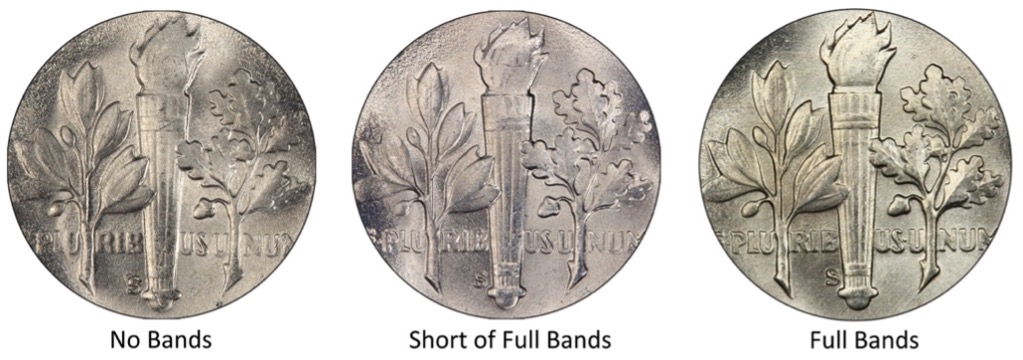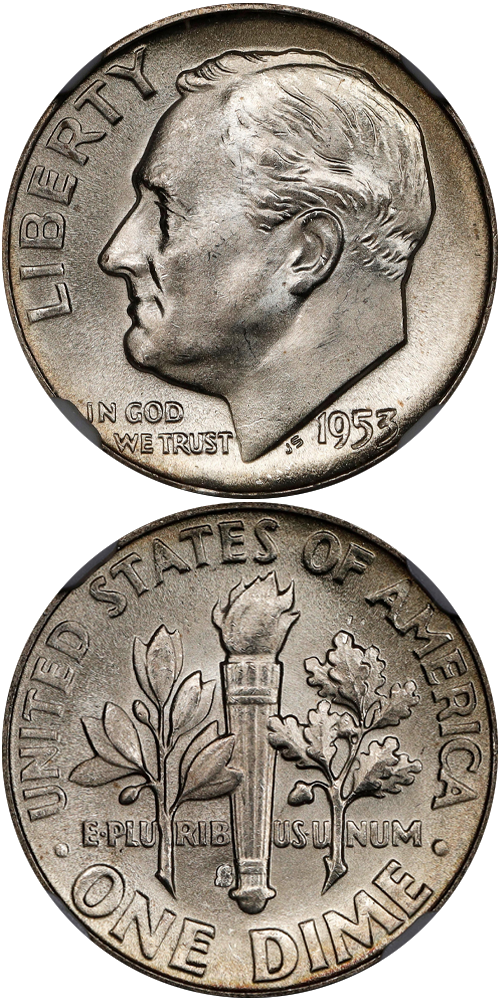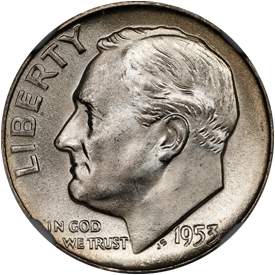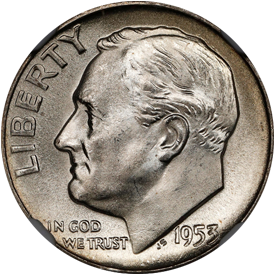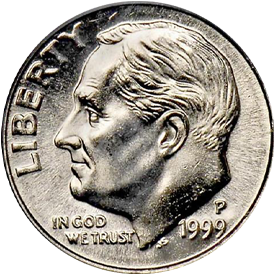The untimely and unexpected death of President Franklin D. Roosevelt in April, 1945 prompted an almost immediate response from Treasury officials who proposed honoring him on one of the nation’s circulating coins. The 25-year minimum design requirement meant that only three denominations were eligible without special legislation – the cent, the dime and the half dollar. The dime was chosen, and by the Fall of 1945, the mint’s Chief Engraver John R. Sinnock had prepared models. After some modifications were made, the new dime was released to coincide with the March of Dimes campaign for 1946.
For roughly the first two decades, there were no changes to the Roosevelt dime, but in 1965, the 90% silver content was replaced by a “sandwich” design which surrounded an inner core of pure copper with outer layers of copper-nickel. Since 1992 however, Proofs have been struck in both copper-nickel and silver. Now approaching 80 years old, other than the alloy change in 1965, the Roosevelt dime remains virtually unchanged since its introduction.
Due to its relatively recent vintage, there are no extremely rare Roosevelt dimes among the regular issues. There are however, several Proof issues lacking the “S” mintmark, and a few doubled dies that are worth a significant premium.
In recent years, the attention of some collectors has turned to the detail present on the torch on the reverse, and full straps or bands on the torch as well as full detail in the flame is now recognized by the major grading services. Certain dates with the “FB” (PCGS) or “FT” (NGC) designation now bring well into four-figure prices in very high grade (MS67 or higher) due largely to competition among set registry collectors.
Full Bands
About 20 years or so ago, some collectors began searching for, and paying a premium price for Roosevelt times with full separation on the bands seen on the torch. In response to this interest, the grading services added the FB (PCGS) or FT (NGC) designation to Roosevelt dimes. Note that both the upper and lower set of bands must show full separation to qualify for the designation.
